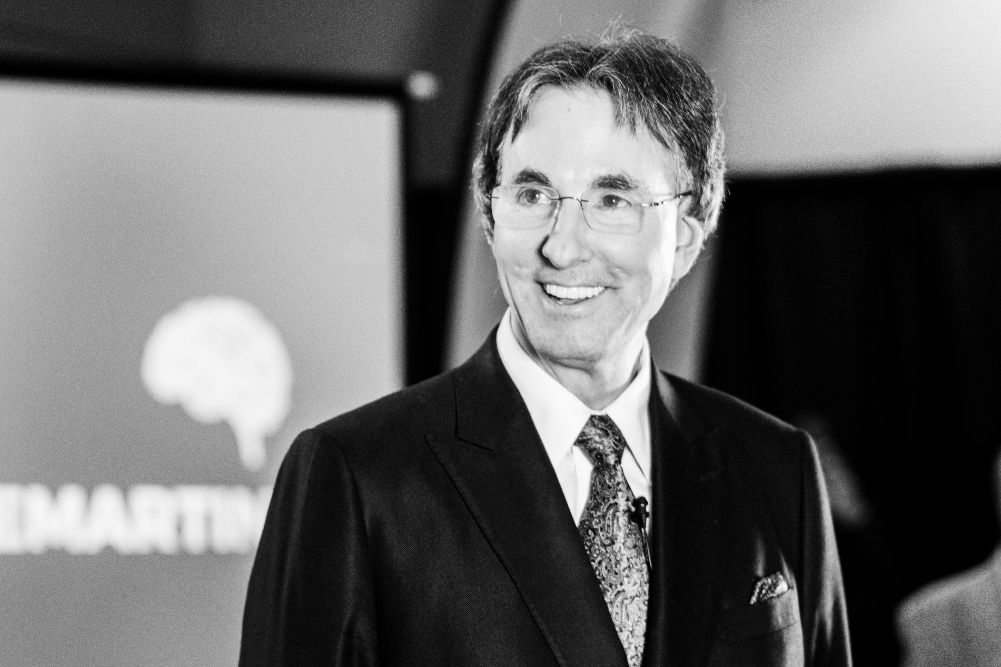Gandhi: spirituality and politics
Mohandas Gandhi passionately defended and believed in the unique dignity of each and every life, and in the unity of all religions. His message of non-violence and supporting local economies is still very powerful and relevant in today’s divided world.
“My mission is not merely brotherhood of Indian humanity,” said Gandhi. “My mission is not merely freedom of India … But through realisation of the freedom of India, I hope to realise and carry on the mission of the brotherhood … My work will be finished if I succeed in carrying conviction to the human family that every man or woman, however weak in body, is the guardian of his or her self-respect and liberty.”
Early life
Born into a middle-class Hindu family in the city of Porbander, a small town on the western coast of India, Gandhi was the youngest of four children. His father held the office of Prime Minister in the principality of Rajkat, and both his parents were committed Hindus, meaning that from an early age Gandhi followed the laws of no alcohol or meat and fasting for self-purification. As was also common in Indian culture, Gandhi entered into an arranged marriage at the age of 13 with a 10-year-old girl named Kasturba; he remained married to her his whole life.
At 19, Gandhi travelled to England to study law and returned to India three years later fully qualified. However, he was not successful as a lawyer in his home country and, after only a year, he was offered a job by an Indian businessman with interests in South Africa. It was this move to South Africa, at just 23, that really began the shift in Gandhi’s thinking.
In South Africa in 1893, most Hindus had no legal rights. According to biographer Louis Fisher, when Gandhi arrived, he found a nation “sharply divided by colour, class, religion and profession and each group zealously defended the words and symbols which demarcated it from the others”. The European colonists did not consider Hindus to be full human beings and referred to them as “coolies”. This had a profound influence on the young Gandhi.
In fact, it was during this time that Gandhi experienced racism first hand, forever changing the course of his future. While travelling on a train to Pretoria for a lawsuit, he was thrown off the train by police for sitting in first-class accommodation, even though he had paid for the ticket. Rather than return to the train and sit in the third-class accommodation, he decided to sit all night, shivering with cold, in the station waiting room — his coat was in his luggage and he was too afraid of being insulted again to ask for it.
While sitting in the dark and cold, Gandhi began to truly contemplate the “dreaded disease of colour prejudice”. The realities of racism and his role in his adopted country where starkly clear to him, but he decided it would be cowardly to flee South Africa. Instead, in the shivering cold of a train station, Gandhi decided it was his duty to stay and combat racial prejudice.
Many years later, when asked by Dr John R Mott, a Christian missionary, what were his most creative experiences in life, it was this story of the night in the train station that Gandhi recalled.
Following this epiphany, Gandhi went on to become a leader of the Indian community in South Africa and, over years, developed a political movement based on the methods of non-violent civil disobedience, which he called satyagraha — satya is “truth”, agraha “firmness” or “force”.
During this time, Gandhi also decided to give up all Western ways and followed the traditional Hindu practices of austerity and self-denial. He began to dress simply in a loin cloth and shawl, and rejected all other material possessions. In 1906, he became celibate, having fathered four sons, and he preached brahmacharya (vow of celibacy) as a means of birth control and a way to attain spiritual purity.
Part of his daily practice also eventually included walking — up to two hours every day. Dr William Emilsen, Senior Lecturer in Theology at Charles Sturt University and author of a biography on Gandhi, says, “People were always wanting to talk to Gandhi, so he would say ‘walk with me’ and they would follow him and talk as he walked.”
Dr Emilsen adds that Gandhi was deeply committed to fasting — not just for one particular protest but on a regular basis. “Gandhi would fast every Monday,” Dr Emilsen says. “And it wouldn’t just be a fast from food; he would also not talk or converse with anyone. He would use Mondays to write, catch up on his correspondence, spin cloth and meditate.”
In 1915, at the age of 46, Gandhi returned to India, where he began to travel around the country settling local disputes. His success at handling these small confrontations and conflicts led to him being admired throughout the country and to the great Indian writer Rabindranath Tagore giving him the title “Mahatma”, which meant “Great Soul”.
Within 15 years of his return, Gandhi became the leader of the Indian nationalist movement. Using the tenets of satyagraha he led the campaign for Indian independence from Britain. Gandhi was arrested many times by the British for his activities in India; he believed it was honourable to go to jail for a just cause. Altogether, he spent seven years in prison for his political activities.
India was granted independence in 1947 and partitioned into India and Pakistan. Rioting between Hindus and Muslims followed, during which Gandhi advocated a united India where Hindus and Muslims could live together in peace. On January 13, 1948, at the age of 78, he began a fast with the purpose of stopping the bloodshed. After five days, the opposing leaders pledged to stop the fighting and Gandhi broke his fast. Twelve days later, on January 30, as he was attending prayers, he was shot and killed by Nathuram Godse, a 35-year-old editor of a Hindu Mahasabha extremist newspaper in Poona.
Among the tributes to Gandhi on his death, the great physicist Albert Einstein said: “Generations to come will scarce believe that such a one as this walked the earth in flesh and blood.”
Non-violence
Despite his legacy, there was nothing passive about Gandhi. He actually disliked the term “passive resistance”, which is why the term satyagraha or “soul force” was used, reflecting Gandhi’s focus much more adequately. He wrote: “Satyagraha is not predominantly civil disobedience, but a quiet and irresistible pursuit of truth.” His main goal was to be strong, not with the strength of the brute but with the strength of the spark of God.
Gambhir Watts, President of Bharatiya Vidya Bhavan Australia (one of the largest NGOs in the world, literally meaning the “House of Indian Wisdom”) explains that Gandhi’s policy of satyagraha is the exact opposite to the policy of an eye for an eye, which Gandhi said would only result in “making everybody blind”. “You cannot inject new ideas into a man’s head by chopping it off; neither will you infuse a new spirit into his heart by piercing it with a dagger.” Gandhi taught that acts of violence create bitterness in the survivors and brutality in the destroyers.
A key part to Gandhi’s commitment to non-violence is also the pursuit of truth — at all times. Dr Emilsen recounts the story of Ghandi’s Salt March of 1930, before which Gandhi actually informed the British Viceroy of his intentions to protest the British salt tax. The tax essentially made it illegal to sell or produce salt, allowing a total British monopoly. As Dr Emilsen describes, “Gandhi’s belief in truth was even carried through to his protests — he wrote to the Viceroy informing him of the action before it had even begun.”
Unfortunately, the letter had no effect and, after walking for 23 days, Gandhi and his 28 male satyagrahis (activists of truth and resolution) reached the coast. Along the way, they had collected several thousand marchers protesting the unfair law. On his arrival, Gandhi addressed the large crowd that had gathered and picked up a tiny lump of salt — in effect, breaking the law. Within moments, the satyagrahis followed Gandhi’s passive defiance, picking up salt everywhere along the coast. A month later, Gandhi was arrested and thrown into prison, already full with fellow protestors. Many protests followed and, as the non-violent satyagrahis did not defend themselves against the clubs of policemen, many were killed instantly.
Another non-violent technique Gandhi used frequently was fasting. In an attempt to bring the Hindu–Muslim communities together, he fasted for 21 days. He also fasted during a strike of mill workers in Ahmedabad. He also famously used fasting to try to improve the status of members of the lower castes, or Harijans. On September 20, 1932, Gandhi began a fast for them, opposing a British plan for a separate voting body for the Harijans. Fasting also saw some temples opened to exterior castes for the first time in history.
Gandhi’s non-violent protests, marches and fasts were revolutionary and had a profound effect on some of our greatest leaders. When the Dalai Lama was awarded the Nobel Prize for Peace in 1989, he accepted it on behalf of not only “the oppressed everywhere” and the 6 million Tibetan people but also “as a tribute to the man who founded the modern tradition of non-violent action for change, Mahatma Gandhi, whose life taught and inspired me”.
Gandhi’s philosophy of non-violence also famously inspired Dr Martin Luther King, the man behind the rights for African Americans during the 1950s and 60s. “Love, for Gandhi, was a potent instrument for social and collective transformation,” Dr King said. “It was in this Gandhian emphasis on love and non-violence that I discovered the method for social reform that I had been seeking for so many months. I came to feel that it was the only morally and practically sound method open to oppressed people in their struggle for freedom.”
Tolerance & justice for all
Within Gandhi’s beliefs of non-violence, he also encouraged tolerance of all religions. Although a devout Hindu his whole life, he was very interested in and influenced by other religions, especially Islam and Christianity. These religions shaped his spiritual outlook, along with thinkers such as Henry David Thoreau, Leo Tolstoy and Ruskin.
Having studied many religions and their writings, Gandhi came to believe that God and religion were two very different things. For him, they were fundamentally different entities and much of the world’s violence came from a belief that they were one and the same. Gandhi argued that God was perfect and religion, being man’s humble attempt at understanding this divine perfection, was necessarily imperfect.
Therefore, Gandhi wanted unreserved reverence for all the great religions in the world. He asked for much more than tolerance; he pleaded for deep mutual understanding of humanity to learn from each other. He said, “Religion must help humanity towards its goals on earth.”
Similarly, Gandhi desired social justice for all in society, without discrimination. He argued that, as a country grows economically, it must ensure that all its members are brought with it. No one can be left behind. As Gambhir Watts explains, “Gandhi was of the firm opinion that if a nation had to go on the path of true development, if it had to accord equal opportunities and freedom to all its citizens … then it must take such steps that everyone, without any discrimination, passed over through the process of education to the right direction.”
Swadeshi & the environment
One of the lesser-known areas of Gandhi’s philosophy was his belief in protecting the environment and supporting only produce from local growers. This philosophy is known as swadeshi, which, in effect, means local self-sufficiency.
According to the principle of swadeshi, whatever is made or produced in the village must be used first and foremost by the members of that village. Gandhi argued that trading among villages and between villages and towns should be minimal, but goods and services that cannot be generated within the community can be bought from elsewhere. He also urged Indians to make their own clothing rather than buy British goods.
Gandhi believed that swadeshi avoided economic dependence on external market forces that could make the village community vulnerable. He had seen the reliance of villagers on the resources of British rule and the upper class and knew what devastation this could cause. He also believed that, without the ability to grow and source your own resources, conflict will never be eliminated.
Swadeshi also avoids unnecessary, unhealthy, wasteful and environmentally destructive transportation. If you consider how most things are transported in India, the avoidance of having to use this means has great implications. “Gandhi believed that each village must build a strong economic base to satisfy most of its needs,” explains Gambhir Watts from Bharatiya Vidya Bhavan, “and all members of the village community should give priority to local goods and services. Through this, each individual can be free.”
Gandhi was also very concerned about the path society was taking towards the over-use of technology and machines. He believed a society in which workers had to labour at a conveyor belt, in which animals were treated cruelly in factory farms, and in which economic development often left the environment devastated, was not a civilisation we should be creating.
In fact, Mahatma Gandhi was accused of being anti-machines and anti-technological advancement throughout his time. But when questioned on whether he was opposed to machines, he answered: “How can I be when I know that even this body is a most delicate piece of machinery? The spinning wheel is a machine; a little toothpick is a machine. What I object to is the craze for machinery, not machinery as such. The craze is for what they call labour-saving machinery. Men go on ‘saving labour’ till thousands are without work and thrown on the open streets to die of starvation.
“I want to save time and labour, not for a fraction of mankind but for all. I want the concentration of wealth not in the hands of few, but in hands of all. Today, machinery merely helps a few to ride on the backs of millions.”
Swadeshi, for Gandhi, was a sacred principle — as sacred for him as the principle of truth and nonviolence. “Every morning and evening, Gandhi repeated his commitment to swadeshi in his prayers,” says Dr Emilsen.
Gandhi’s relevance today
“I claim to be no more than an average man with less than average abilities,” Gandhi said. “I have not the shadow of a doubt that any man or woman can achieve what I have if he or she would make the same effort and cultivate the same hope and faith.”
Much debate has been had over the years on whether Mahatma Gandhi was a great spiritual leader or, in fact, just a political one. He did not publish countless books on how to follow his philosophy. He did not create a doctrine or set a path for us all to travel. However, that does not make him any less of a spiritual leader we can all learn from and try to emulate in our own lives.
“I totally disagree with the argument that Gandhi was only a political leader,” says Dr Emilsen. “We have to remember that his philosophy, his words and his messages came from a place of great spirituality. His understanding of society, of human beings, was truly profound. And to come from being a bumbling law student to one of the great world leaders of our time — that is a spiritual leader.”
His influence and the importance of his messages of non-violence, truth and equality can give us all something to pursue. We all can try to live a life where we seek equality for everyone around us, where we encourage religious equality and we try to support local producers and communities. We can all live the life of non-violent protest over the mistreatment and unfair conditions of people in our community.
“The events and developments of our century have encouraged the human being to become wiser, more mature,” says the Dalai Lama. “In many countries, I think the attraction to Gandhian philosophy is growing, because the capacity for human destruction is so immense, because the threat to the environment is so great, people are developing greater understanding of the meaning of non-violence and compassion.”
“His messages of non-violence, tolerance and protection of the environment are still as valuable today as they have always been — perhaps even more,” agrees Gambhir Watts. Perhaps one of the most powerful messages for us today came in one of the final notes left by Gandhi in 1948:
“I will give you a talisman. Whenever you are in doubt, or when the self becomes too much with you, apply the following test. Recall the face of the poorest and the weakest man [woman] whom you may have seen and ask yourself if the step you contemplate is going to be of any use to him [her]. Will he [she] gain anything by it? Will it restore him [her] to a control over his [her] own life and destiny? In other words, will it lead to swaraj [freedom] for the hungry and spiritually starving millions? Then you will find your doubts and your self melt away.”
Amy Taylor-Kabbaz is a writer, speaker and creator of happymama.com.au. She is the author of Happy Mama: A Spiritual Survival Guide and commentator on parenting and wellbeing. You can follow her on Twitter at @amytaylorkabbaz







